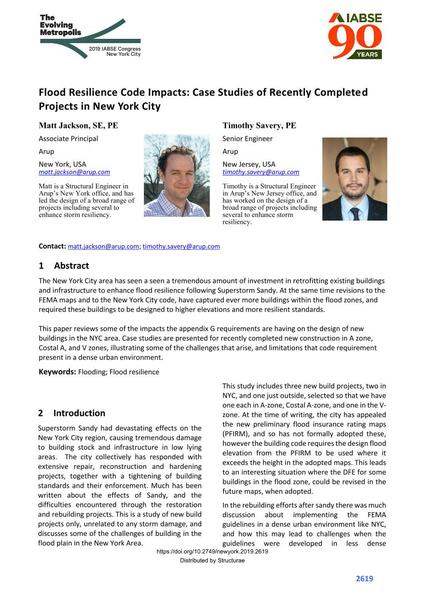Flood Resilience Code Impacts: Case Studies of Recently Completed Projects in New York City

|
|
|||||||||||
Bibliographic Details
| Author(s): |
Matt Jackson
(Arup)
Timothy Savery (Arup) |
||||
|---|---|---|---|---|---|
| Medium: | conference paper | ||||
| Language(s): | English | ||||
| Conference: | IABSE Congress: The Evolving Metropolis, New York, NY, USA, 4-6 September 2019 | ||||
| Published in: | The Evolving Metropolis | ||||
|
|||||
| Page(s): | 2619-2623 | ||||
| Total no. of pages: | 5 | ||||
| DOI: | 10.2749/newyork.2019.2619 | ||||
| Abstract: |
The New York City area has seen a seen a tremendous amount of investment in retrofitting existing buildings and infrastructure to enhance flood resilience following Superstorm Sandy. At the same time revisions to the FEMA maps and to the New York City code, have captured ever more buildings within the flood zones, and required these buildings to be designed to higher elevations and more resilient standards. This paper reviews some of the impacts the appendix G requirements are having on the design of new buildings in the NYC area. Case studies are presented for recently completed new construction in A zone, Costal A, and V zones, illustrating some of the challenges that arise, and limitations that code requirement present in a dense urban environment. |
||||
| Keywords: |
flooding Flood resilience
|
||||
